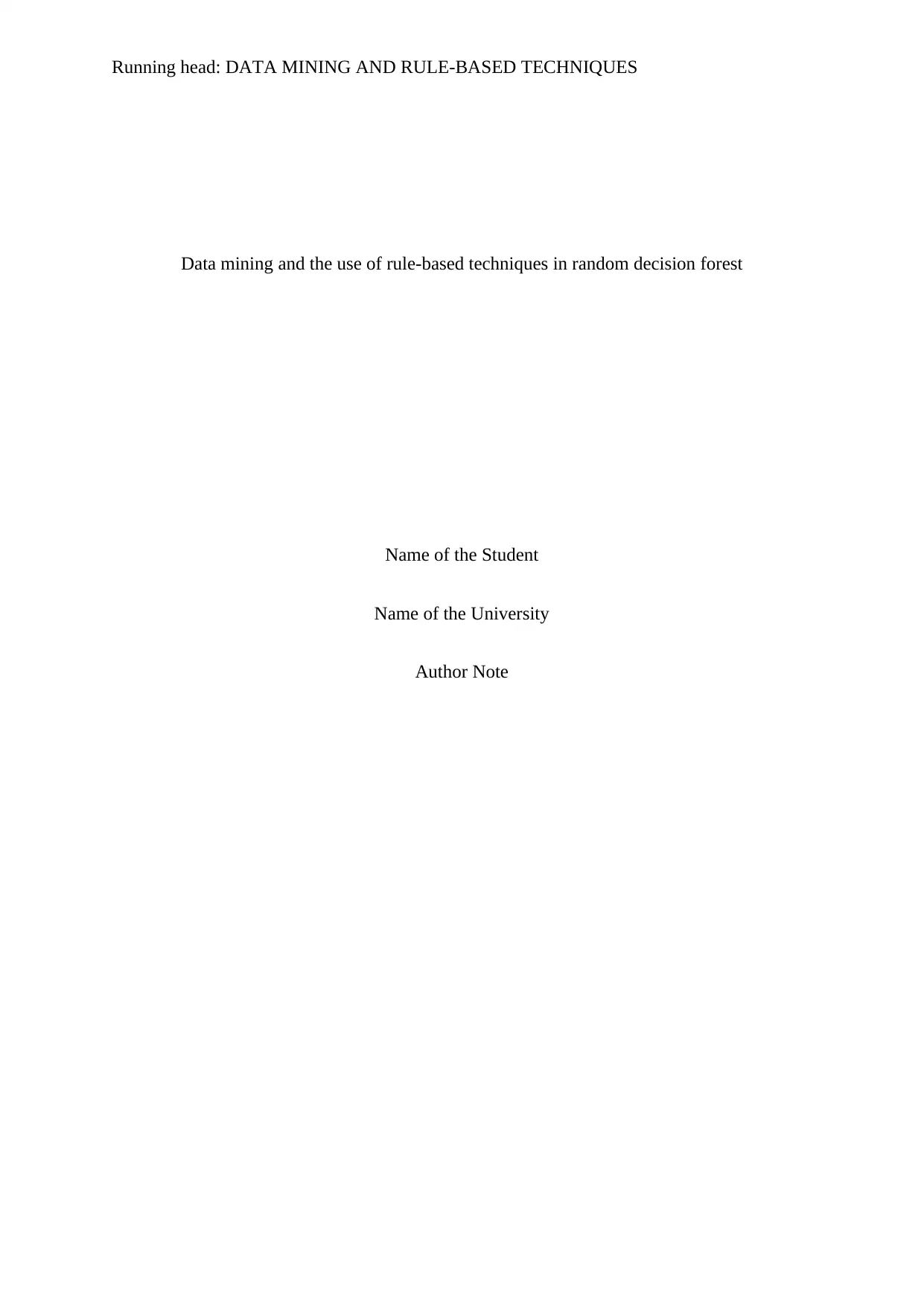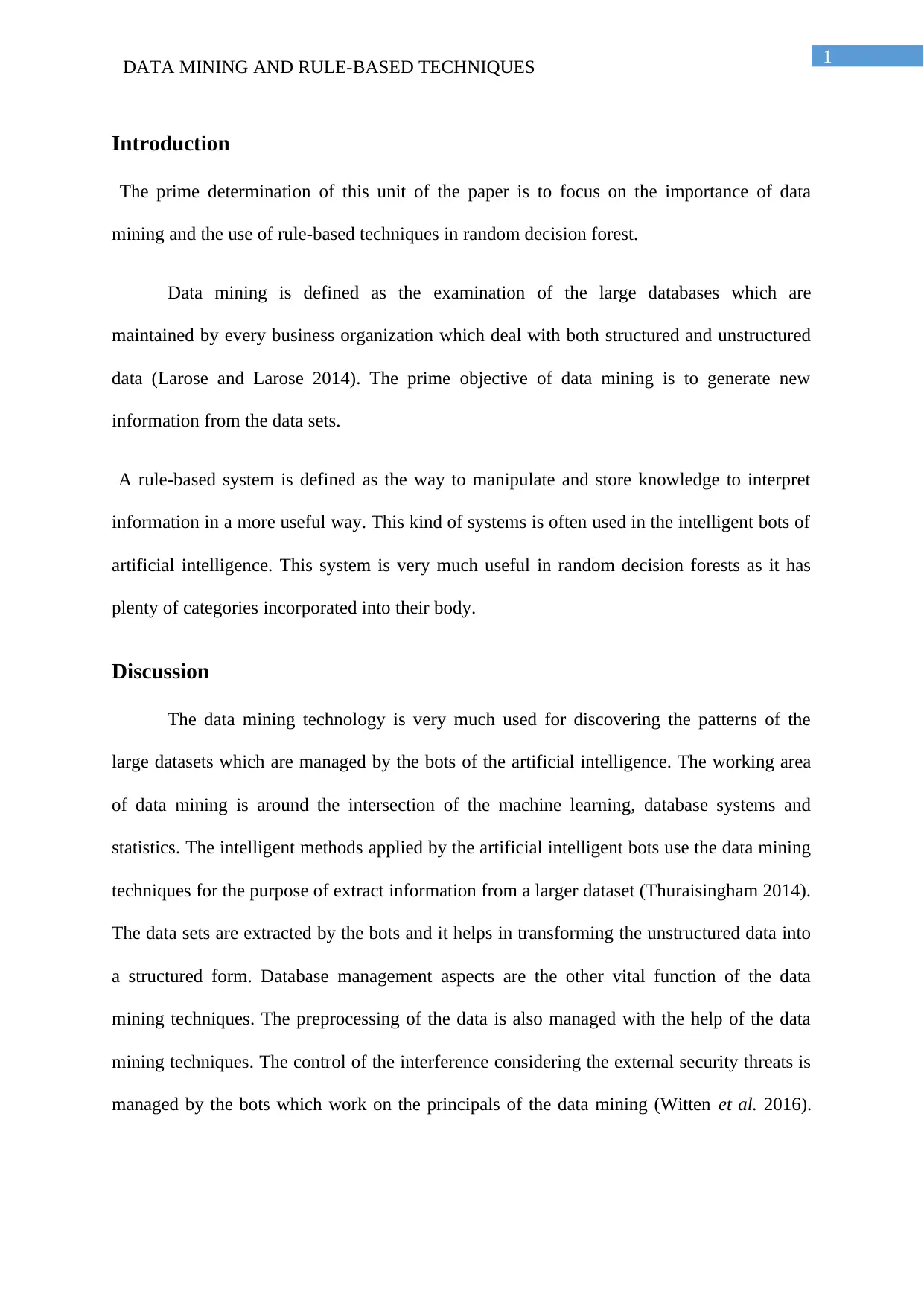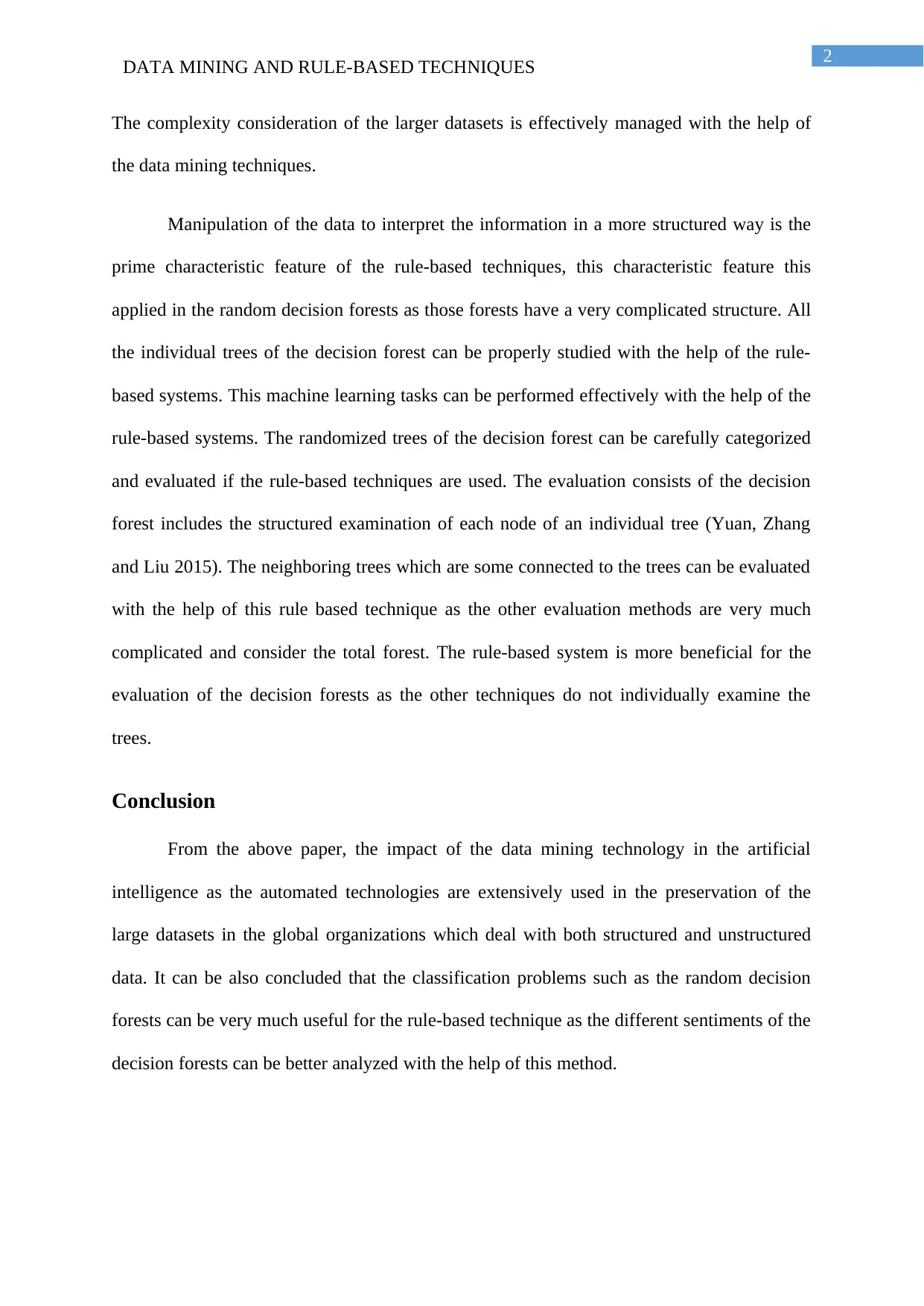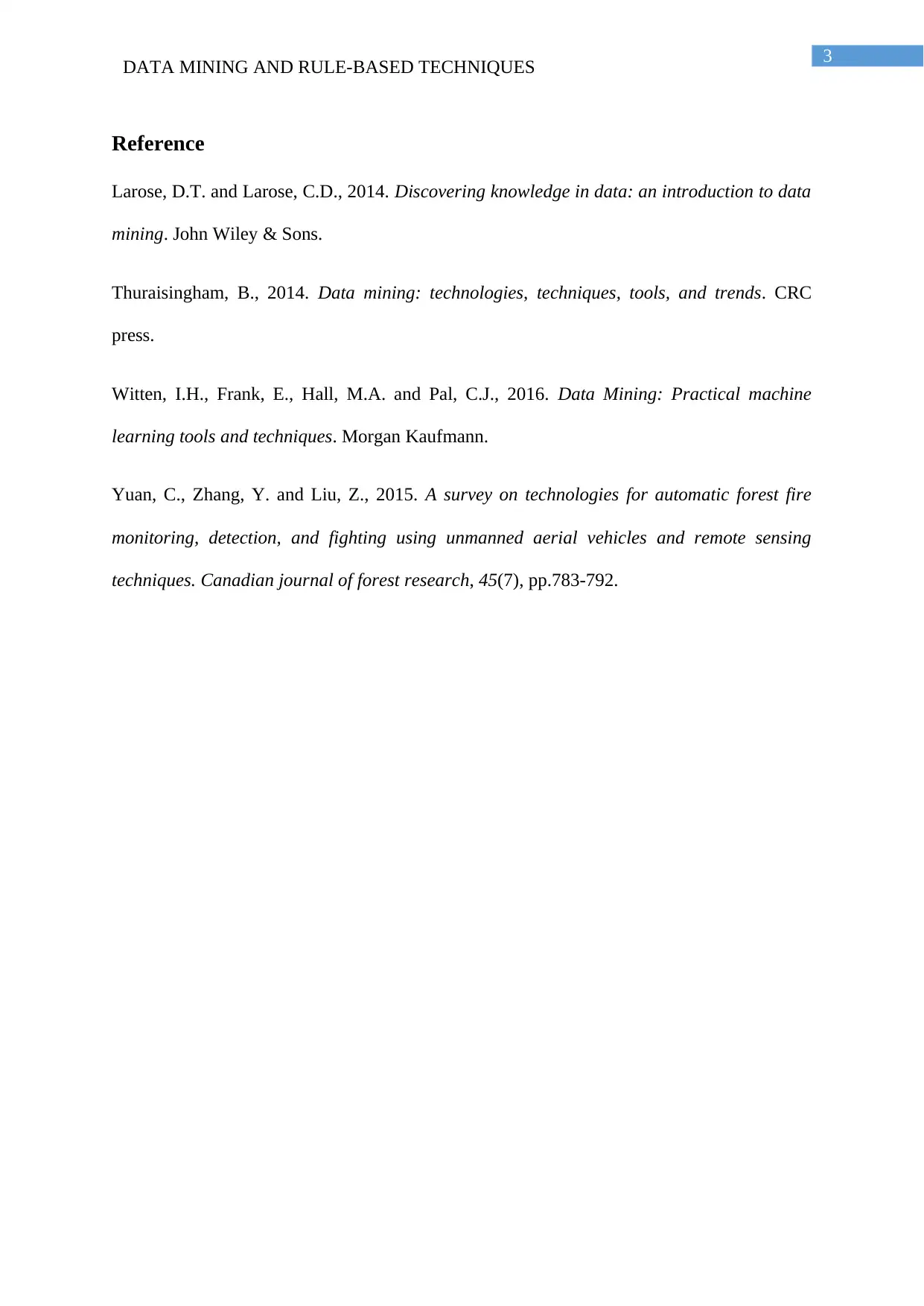Data Mining and Rule-Based Techniques in Random Decision Forests
VerifiedAdded on 2023/05/30
|4
|768
|149
Report
AI Summary
This report delves into the critical role of data mining and rule-based techniques, emphasizing their application within random decision forests. The paper begins by defining data mining as the analysis of large datasets, both structured and unstructured, to extract new information, and rule-based systems as methods of knowledge manipulation for improved information interpretation, particularly in AI bots. The discussion section highlights the utilization of data mining in machine learning, database systems, and statistics, emphasizing the role of these techniques in transforming unstructured data and managing database aspects, including security. The report then explores the advantages of rule-based systems in analyzing complex structures like random decision forests, allowing for the structured examination of individual trees and the evaluation of neighboring trees, which is often difficult with other methods. The conclusion summarizes the impact of data mining in AI and underscores the effectiveness of rule-based techniques for classification problems, specifically in analyzing the different sentiments within decision forests.
1 out of 4











![[object Object]](/_next/static/media/star-bottom.7253800d.svg)